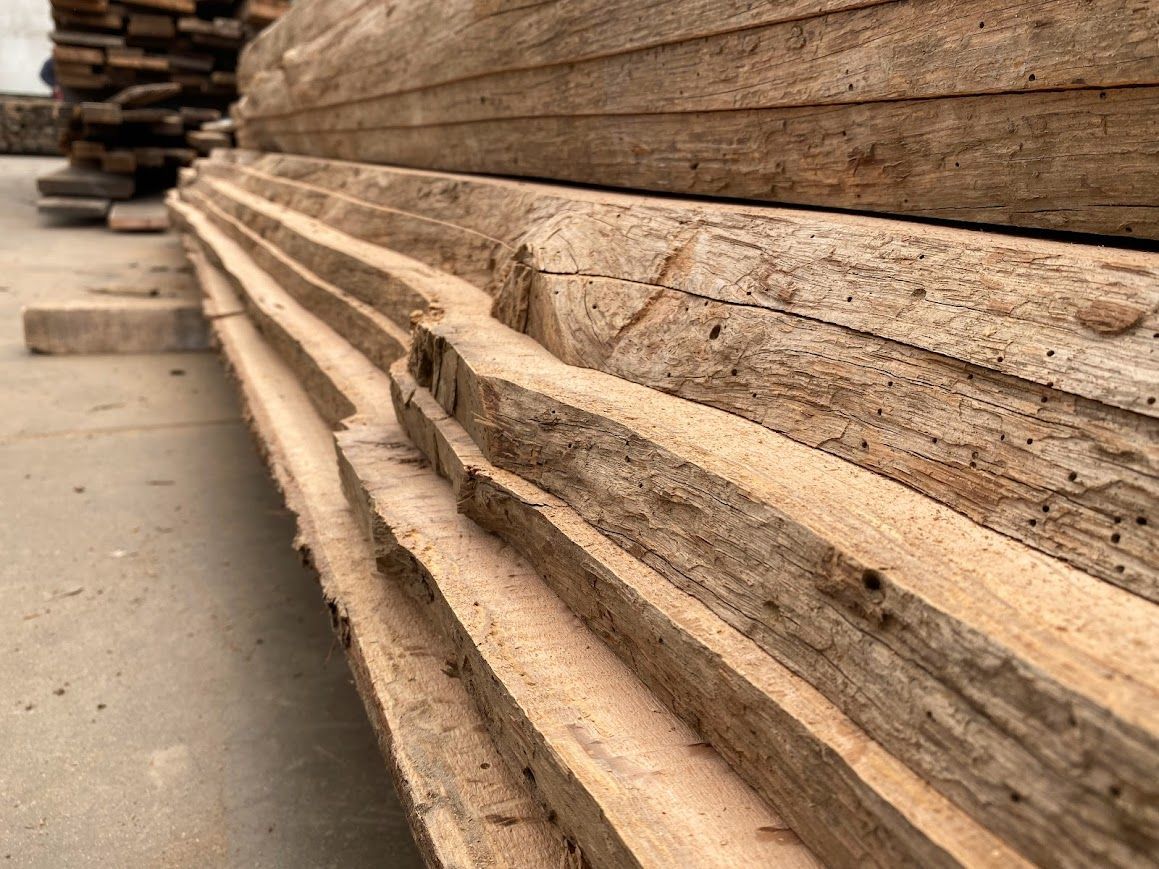How to Spot Quality in Quarter-Sawn Lumber
How to Identify Superior Quality for Your Projects

Looking to buy quarter-sawn lumber for your next project? It’s important to know how to spot the good stuff. True quarter-sawn boards are prized for their strength, stability, and beautiful grain patterns. However, not all boards marketed as quarter-sawn meet the mark. By learning what to look for, you can avoid lower-quality options and ensure your project stands the test of time.
What Makes Quarter-Sawn Lumber Special?
Quarter-sawn lumber is made using a unique cutting technique. Logs are first divided into quarters, then sawn in a way that creates boards with growth rings running almost straight up and down. This method gives the boards their durability and distinct look.
The Importance of Growth Ring Angles
The growth rings in true quarter-sawn lumber meet the face of the board at an angle between 60 and 90 degrees. Boards with lower angles may perform more like standard plain-sawn or rift-sawn wood.
Consistent Grain Patterns
High-quality quarter-sawn boards have grain lines that are straight and even across the entire length and width. This consistency signals proper cutting and careful log selection.
Signs of High-Quality Quarter-Sawn Lumber
1. Straight Grain Lines
Look for straight, tight grain lines running along the face of the board. These should be evenly spaced and not zigzag or wander.
2. Ray Fleck (in Some Woods)
If you’re working with oak, check for prominent “ray flecks.” These are shiny, striped patterns that run perpendicular to the grain and add a unique, decorative touch.
3. Uniform Color
Good quarter-sawn lumber has consistent coloring, no matter the species. You’ll notice fewer drastic changes between lighter sapwood and darker heartwood.
4. Smooth Texture
Run your hand over the board. Quality quarter-sawn lumber feels smooth and even, with no rough spots or bumps caused by irregular grain.
How to Check the Growth Rings
Visual Exam
Look at the end of the board. The growth rings should meet the face of the board at almost a right angle. This tells you the board was properly sawn.
The 30-Degree Rule
The growth rings should not tilt more than 30 degrees away from perpendicular. Boards outside this range behave more like plain-sawn lumber.
Consistency Is Key
Examine the growth ring angle at different points to ensure it’s the same down the board. A consistent angle shows good craftsmanship.
Quality by Wood Type
Different types of wood offer unique features when quarter-sawn. Here’s what to expect with some common species:
Oak
- Bold ray fleck patterns
- Tight, straight grain
- Little color contrast between lighter and darker areas
- A smooth and even surface
Pine
- Straight grain with no dramatic arches or “cathedral” patterns
- Even resin distribution
- Minimal twisting and warping over time
Maple and Hardwoods
- Tight, uniform grain patterns
- Consistent coloring
- High resistance to warping
- Smooth cutting and machining
Watch Out for Common Issues
Not every board labeled “quarter-sawn” lives up to expectations. Here’s what to avoid:
1. False Quarter-Sawn
Some boards are cut to look like quarter-sawn wood but aren't. Check the end grain to make sure the growth rings meet the 60 to 90-degree rule.
2. Mixed Cuts on One Board
Boards with both quarter-sawn and plain-sawn areas don’t perform well. These are less stable and may warp or twist over time.
3. Defects and Damage
- Knots: Look for tight, small knots. Large or loose knots lower the board’s strength.
- Cracks and Splits: Small surface cracks are okay, but deep or through-and-through splits are not.
- Warping: A good board should lie flat and straight, without bowing, twisting, or cupping.
4. Poor Drying
Properly dried lumber should have a moisture content of 6-12%, depending on use. If wood is over-dried or under-dried, it might not hold its shape well.
Grading Standards for Lumber
Understanding lumber grades helps you pick the right quality for your project. Here’s a summary:
Standard Grades
- FAS (Firsts and Seconds): The highest-quality boards, with few if any defects.
- Select Grade: Good quality with minor, visually appealing imperfections.
- Common Grades: More affordable, but includes defects like knots and color variation.
Specialty Grades
Some industries, such as furniture making or musical instrument production, have additional grading that focuses on specific needs for appearance and performance.
Tips for Testing Quality
Spend a little time testing your boards to make sure they meet your standards:
Stability Testing
Expose the wood to slight moisture changes and see how it reacts. True quarter-sawn lumber won’t expand, shrink, or distort much.
Machining Test
Run the board through a planer or saw. High-quality wood should cut cleanly, with no splinters or tear-out.
Strength Check
Assess how strong and stiff the board feels. Quality lumber has consistent density and doesn’t show weak spots.
Final Thoughts
Identifying good quarter-sawn lumber takes a bit of knowledge and attention to detail. Check for straight grain lines, consistent angles, and smooth textures. Avoid boards with major defects or mixed cutting methods. Ultimately, investing in high-quality quarter-sawn wood ensures better results for your projects and saves money in the long run.
At Bay & Bent, we’ve built our reputation by understanding what makes lumber exceptional. Whether you’re restoring historic structures or starting a new project, we’re here to guide you toward materials that deliver durability, beauty, and lasting value.









